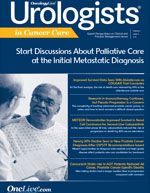Men With Intermediate or High-Risk Prostate Cancer See Survival Benefit From Increased Radiation Therapy
Men with intermediate- or high-risk prostate cancer experienced higher survival rates when given increased radiation doses than men with low-risk disease.
Anusha Kalbasi, MD
Men with intermediate- or high-risk prostate cancer experienced higher survival rates when given increased radiation doses than men with low-risk disease, according to researchers from Penn Medicine. In addition, men with low-risk disease but with already-high survival rates were unaffected by higher radiation doses.
Anusha Kalbasi, MD, and colleagues compared the survival rates of 42,481 men who were diagnosed between 2004 and 2006 and followed through 2012 and linked those rates with increased radiation doses in the National Cancer Database. The researchers investigated whether “radiation dose reduction for patients with low-risk prostate cancer could achieve similar cure rates while avoiding the increased risk of side effects associated with higher radiation doses,” said Kalbasi, a resident in the department of radiation oncology at the Perelman School of Medicine at the University of Pennsylvania.
In 2014, low-risk prostate cancer was the most common type of prostate cancer diagnosed in the United States, affecting about 150,000 patients, many of whom undergo aggressive treatment, either complete removal of the prostate or radiation.
Some men received the standard dose of radiation while others received higher doses of radiation. For men with medium- and high-risk forms of prostate cancer, the researchers found that for every incremental increase in radiation dose, there was a 7.8% and 6.3% reduction, respectively, in the rate of death from any cause. For men with low-risk cancer, no differences in survival were found whether they received the standard dosage of radiation or the higher dosage.
For all groups, 7-year adjusted survival rates were determined. In the low-risk group, survival rates were 86% for men who received either the standard dose or higher dose radiation. For the medium-risk group, survival rates were 82% among men who received the higher-dose radiation, and 78% among men who received the standard dose. For the high-risk group, survival rates were 74% in the higher-dose group and 69% in the standard-dose group.
Radiation therapy is associated with side effects and those side effects have been shown to increase with radiation dose, said Kalbasi. For patients undergoing prostate radiation, side effects include, fatigue, urinary frequency and urgency, changes in bowel habits, and erectile dysfunction.
Prostate cancer is the most common cancer diagnosed among American men, and causes more deaths annually among men than any other tumor except lung cancer. However, a large majority of men found to have prostate cancer ultimately die of other causes, prompting researchers to conduct studies to identify who benefits most from treatment and what those treatments should be.
“Our findings show that the dose of radiation should be personalized to the specific characteristics of the prostate tumor,” Justin Bekelman, MD, associate professor of radiation oncology at the University of Pennsylvania School of Medicine, said in a statement.
“For some patients, personalized treatment will lower the chances of toxicity while maintaining similar survival rates; for other patients, personalized treatment will mean escalating radiation dose to achieve the highest survival while protecting normal tissues, like the bladder and rectum.”
Findings were published in JAMA Oncology.




